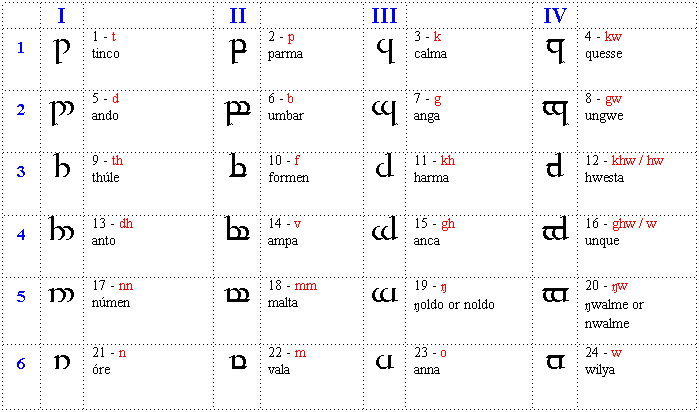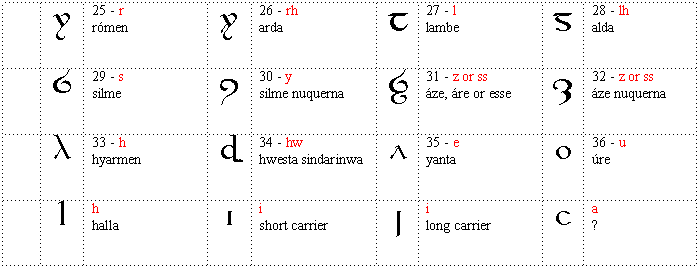
Below is a table containing the Tengwar letters and their Sindarin values:


Tengwar letters are used to represent the five most common vowels sounds, but some tehtar symbols are used along with these letters to represent complex vowel sounds, or diphthongs. The single over-dot seems to be used only with the "i" tengwar letters. Double over-dots represent an "i" or the semi-vowel "y", for example:
The over-bar/tilde represents the semi-vowel "w" and can be used to represent the following sounds:
The second mode of writing Sindarin is called the "Mode of Beleriand". The best known example of this mode of writing is the West Gate of Moria inscription. This mode's most unique characteristic is that it doesn't solely use Tehtar to represent vowel sounds. Instead, the Tengwar letters are used to represent both consonant and vowel sounds. From the example given in the book "The Fellowship of the Ring", it appears that the over-dot Tehta is occasionally used to emphasize the "i" Tengwar or to modify other vowel Tengwar letters to create complex vowel sounds. Also note the use of the over-bar/tilde to represent a preceding nasal sound.
For example the Sindarin Inscription on the West Gate of Moria:
Sources:
"The Lord of the Rings" by J. R. R. Tolkien
Volume I, "The Fellowship of the Ring"
Houghton-Mifflin
ISBN 0-395-27223-8
"The Lord of the Rings" by J. R. R. Tolkien
Volume III, "The Return of the King", Appendix E
Houghton-Mifflin
ISBN 0-395-27221-1
|
Back to Main page. Last updated: November 2, 1999 |
Copyright © 1995-1999 Daniel Steven Smith Frequently Asked Questions |